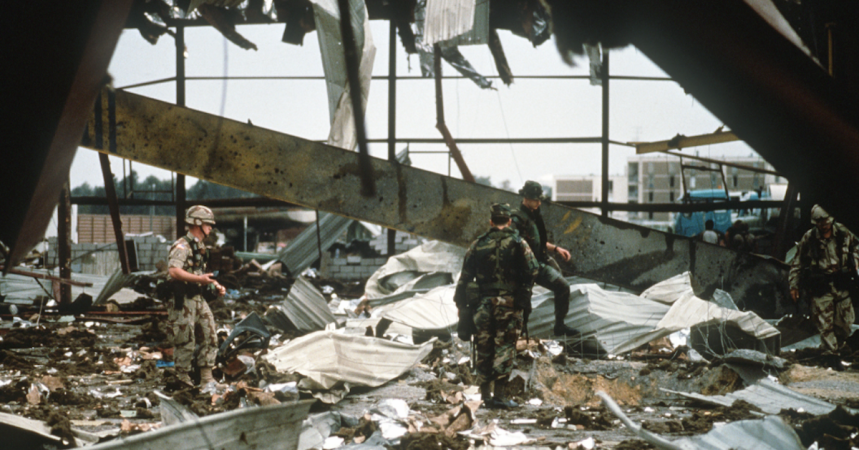In the opening days of 1991’s Operation Desert Storm, ships and aircraft from the United States, Great Britain, and Canada, intercepted the Iraqi Navy as it tried to flee into Iran. The resulting battle in the waters between the Shatt al-Arab waterway and Bubiyan Island was one of the most lopsided naval engagements in history, and the Iraqi Navy essentially ceased to exist.
Operation Desert Storm kicked off in earnest on Jan. 17, 1991 as Saddam Hussein’s Iraqi forces refused to leave Kuwait, the neighbor it invaded just a few months earlier. When the deadline to leave passed, Coalition forces took action. One of those actions involved massive naval forces in the Persian Gulf. In the face of this overwhelming opposition, Iraq’s Navy decided to follow the example of Iraq’s Air Force.
They would immediately gear up, head out, and attempt to escape to Iran and away from certain death. Unlike the Air Force, the Navy never quite made it.

Allied naval forces were actually the first to respond to Iraqi aggression. A joint American-Kuwaiti task force captured Iraqi oil platforms, took prisoners on outlying Iraqi islands, and intercepted an Iraqi attempt to reinforce its amphibious invasion of the Saudi Arabian city of Khafji – those reinforcements never arrived. Instead, the ships they were on were annihilated by Coalition ships.
Any remaining Iraqi Navy ships tried to escape to Iranian territorial waters in a mad dash to not die a fiery, terrible death. They were counting on the idea that small, fast, and highly maneuverable missile craft could make littoral waters too dangerous for heavy oceangoing ships.

 21°N 65°W). Note concussion effects on the water surface, and 16-inch gun barrels in varying degrees of recoil. (National Archives)
21°N 65°W). Note concussion effects on the water surface, and 16-inch gun barrels in varying degrees of recoil. (National Archives) In the end, upwards of 140 Iraqi ships were either destroyed by Coalition forces or fled into the hands of the Iranian Navy. American and British ships, British Lynx helicopters, and Canadian CF-18 Hornets made short work of the aging flotilla, in what became known as the “Bubiyan Turkey Shoot.”
The only shot Iraq’s navy was able to fire in return was a Silkworm missile battery, from a land-based launcher, at the American battleship USS Missouri. The missile was destroyed by a Sea Dart missile from the UK’s HMS Gloucester, rendering it as effective as the rest of Iraq’s Navy.


























